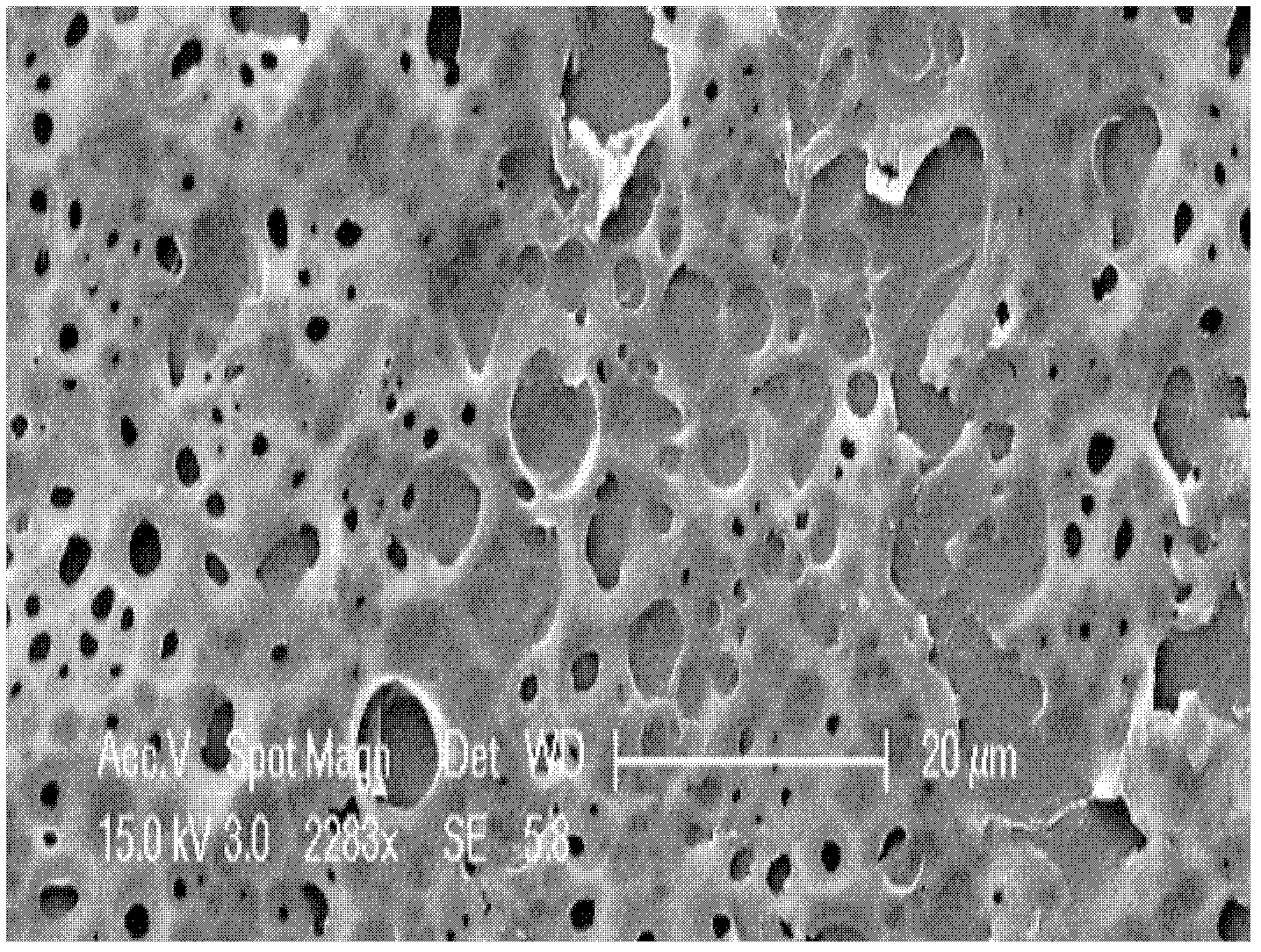Graphene/elemental tin combined electrode plate and preparation method of same
A composite electrode and graphene technology, applied in non-aqueous electrolyte battery electrodes, battery electrodes, circuits, etc., can solve the problems of increasing the equivalent series resistance of electrodes, affecting battery power density, and complex electrode sheet technology.
- Summary
- Abstract
- Description
- Claims
- Application Information
AI Technical Summary
Problems solved by technology
Method used
Image
Examples
preparation example Construction
[0031] The preparation method of the above-mentioned graphene / tin simple substance composite electrode sheet of an embodiment, comprises the steps:
[0032] S10, providing or preparing graphite oxide.
[0033] Graphite oxide is obtained by oxidation of natural flake graphite, and the specific steps are:
[0034] Add 0.5g of natural flake graphite with a mesh number of 100 mesh to 500 mesh into 11.5mL of concentrated sulfuric acid at 0°C, then add 1.5g of potassium permanganate, keep the temperature of the mixture below 10°C, stir for 2h, and then After stirring in a water bath for 24 h, 46 mL of deionized water was slowly added in an ice bath. After 15 minutes, add 140mL of deionized water (which contains 2.5mL of 30% hydrogen peroxide), after which the color of the mixture turns bright yellow, and is suction filtered, then washed with 250mL of 10% hydrochloric acid, suction filtered, and finally 60 ℃ vacuum drying for 48h to obtain graphite oxide.
[0035] S20, adding the ...
Embodiment 1
[0057] (1) Purchase 500-mesh natural flake graphite powder, add 0.5g 500-mesh graphite powder to 11.5mL concentrated sulfuric acid at 0°C, then add 1.5g potassium permanganate, keep the temperature of the mixture below 10°C, stir for 2h, After stirring in a water bath at room temperature for 24 h, 46 mL of deionized water was slowly added in an ice bath. After 15 minutes, add 140mL of deionized water (which contains 2.5mL of 30% hydrogen peroxide), after which the color of the mixture turns bright yellow, and is suction filtered, then washed with 250mL of 10% hydrochloric acid, suction filtered, and finally 60 ℃ vacuum drying for 48h to obtain graphite oxide.
[0058] (2) Mixed solution of graphene oxide and tin chloride: graphite oxide was added into ethanol and ultrasonically peeled for 0.5 h to obtain a uniformly dispersed graphene oxide solution. According to the mass ratio of graphene obtained by graphene oxide reduction to tin element being 2:1, tin chloride was added i...
Embodiment 2
[0063] (1) Purchase 300-mesh natural flake graphite powder, add 0.5g 300-mesh graphite powder into 11.5mL concentrated sulfuric acid at 0°C, then add 1.5g potassium permanganate, keep the temperature of the mixture below 10°C, stir for 2h, After stirring in a water bath at room temperature for 24 h, 46 mL of deionized water was slowly added in an ice bath. After 15 minutes, add 140mL of deionized water (which contains 2.5mL of 30% hydrogen peroxide), after which the color of the mixture turns bright yellow, and is suction filtered, then washed with 250mL of 10% hydrochloric acid, suction filtered, and finally 60 ℃ vacuum drying for 48h to obtain graphite oxide.
[0064] (2) Mixed solution of graphene oxide and tin chloride: graphite oxide was added into isopropanol and ultrasonically peeled for 0.8 h to obtain a uniformly dispersed graphene oxide solution. According to the mass ratio of graphene obtained by reducing graphene oxide to tin element is 3:1, add tin sulfate into e...
PUM
| Property | Measurement | Unit |
|---|---|---|
| concentration | aaaaa | aaaaa |
| diameter | aaaaa | aaaaa |
| diameter | aaaaa | aaaaa |
Abstract
Description
Claims
Application Information
 Login to View More
Login to View More - R&D
- Intellectual Property
- Life Sciences
- Materials
- Tech Scout
- Unparalleled Data Quality
- Higher Quality Content
- 60% Fewer Hallucinations
Browse by: Latest US Patents, China's latest patents, Technical Efficacy Thesaurus, Application Domain, Technology Topic, Popular Technical Reports.
© 2025 PatSnap. All rights reserved.Legal|Privacy policy|Modern Slavery Act Transparency Statement|Sitemap|About US| Contact US: help@patsnap.com

